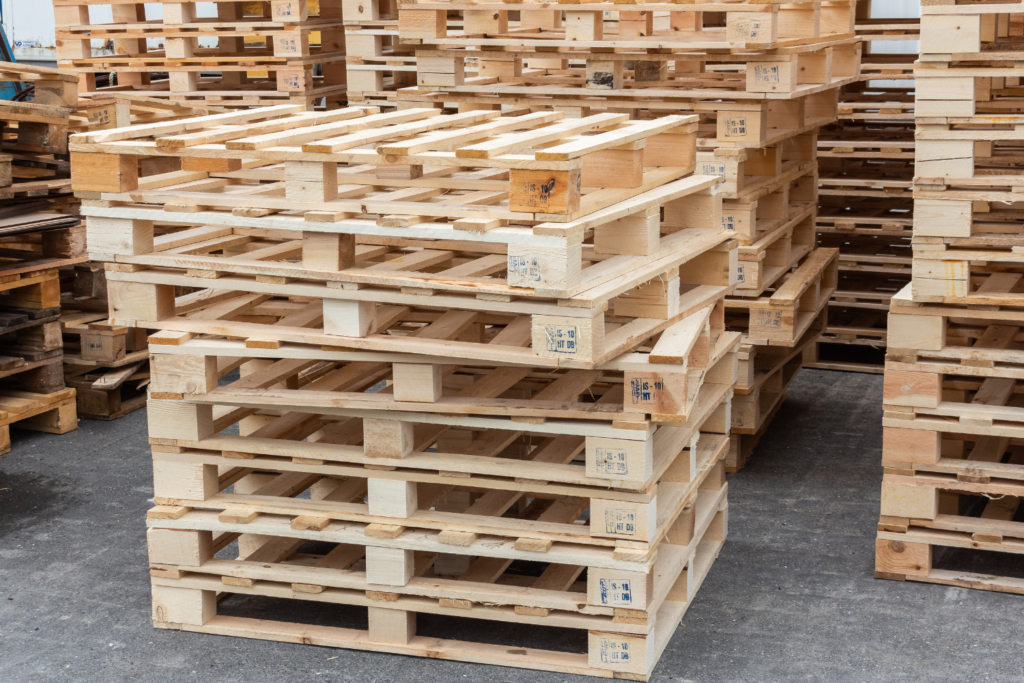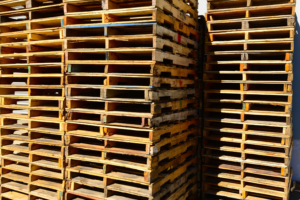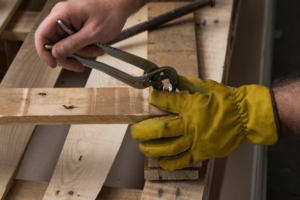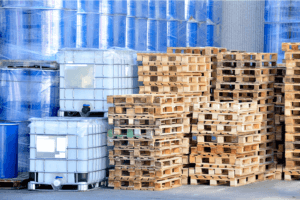Fumigation and heat treatment are two key methods used to treat wooden pallets to ensure compliance with international shipping standards and prevent the spread of pests and diseases.
These treatments are particularly relevant under the International Standards for Phytosanitary Measures #15, or simply ISPM15.
It mandates that wood packaging materials, such as pallets, be treated to reduce the risk of cross-border pest infestations.
Although both methods aim to achieve the same goal, they do so in different ways, each with its advantages and considerations.
Let us discuss whether fumigation or heat treatment is better for your pallets.
What Is Fumigation for Pallets?
Fumigation for pallets is a process in which wooden pallets are treated with chemical gases to eliminate pests, insects, and other harmful organisms.
This treatment method is commonly used to comply with international shipping regulations, particularly to prevent the spread of invasive species across borders.
Methyl bromide is one of the most commonly used fumigants in this process.
During fumigation, pallets are exposed to these gases in an enclosed area to ensure that any living pests within the wood are killed.
It effectively eliminates pests, but it involves the use of chemicals that could pose potential health risks to humans and the environment.
You should conduct the process in controlled environments and follow proper guidelines to ensure safety.
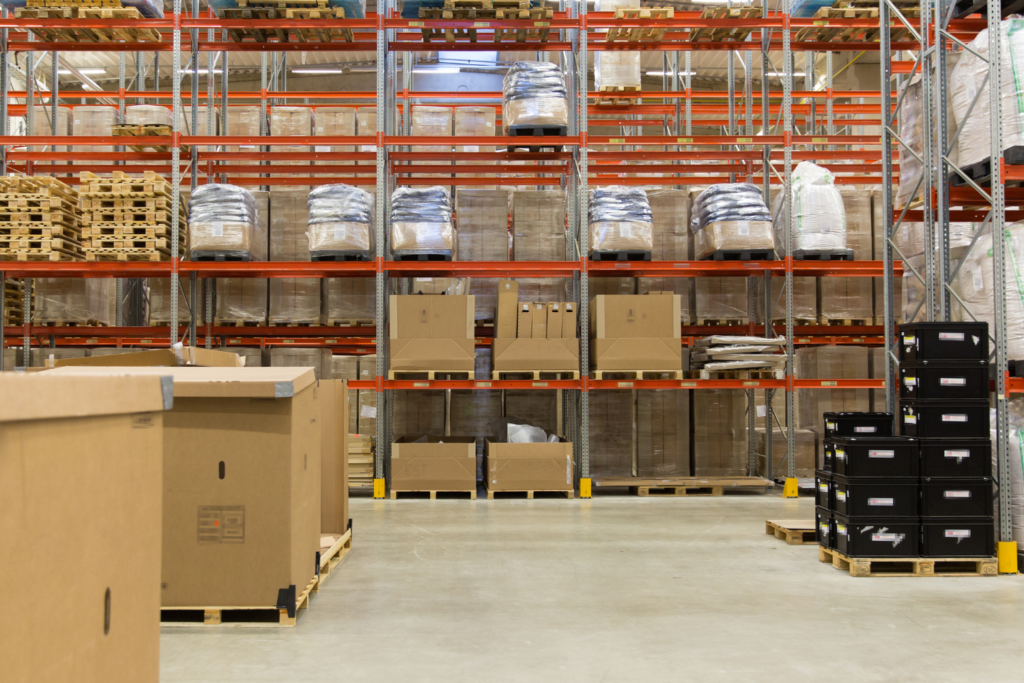
What Is Heat Treatment for Pallets?
Heat treatment for pallets is a non-chemical method used to eliminate pests, insects, and other harmful organisms from wooden pallets.
This process involves subjecting the wood to a specific temperature for a set duration to ensure that any living pests or larvae inside the wood are eradicated
The standard requirement, as per the ISPM15 guidelines, is to heat the wood to a core temperature of at least 56°C (about 133°F) for a minimum of 30 minutes.
The heat penetrates the wood to reach the core, effectively killing any pests or larvae that may be present.
Heat-treated pallets are then marked with the official HT (Heat Treatment) stamp, signifying compliance with international regulations for wood packaging materials used in global trade.
This method is often preferred over fumigation due to its environmentally friendly nature, as it does not involve the use of chemicals like methyl bromide.
Additionally, it eliminates concerns related to chemical residues, making it a safer option for industries dealing with sensitive products like food and pharmaceuticals.
Why Are Fumigation and Heat Treatment Required for International Shipping?
Untreated wood can carry harmful pests or pathogens that pose significant threats to the ecosystems of the destination countries.
Fumigation or heat treatment eliminates the risk of cross-border pest infestations by ensuring that any organisms within the wood are destroyed before the pallets are shipped.
Compliance with these standards is critical to avoid the rejection of goods at customs or the imposition of fines and additional costs due to non-compliance.
The ISPM15 standard helps countries maintain biosecurity, protecting their native plants, crops, and forestry from potential damage caused by invasive species.
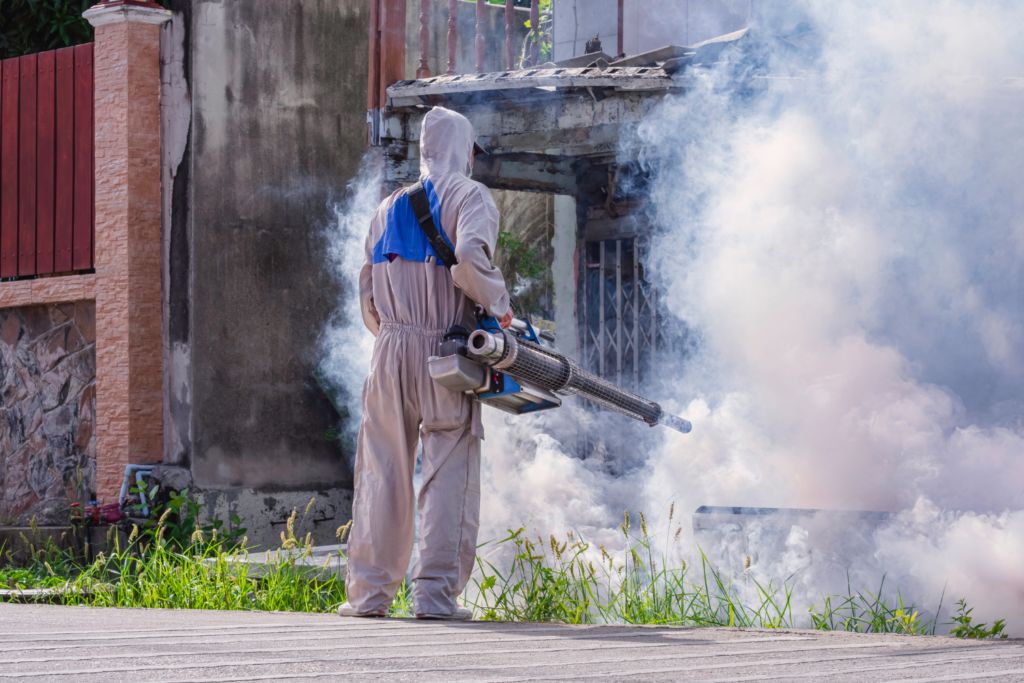
When Should You Fumigate Pallets?
You should fumigate pallets when specific circumstances make it the most appropriate or necessary method for ensuring compliance with international shipping regulations.
1. If the Destination Country Requires It
Some countries may have regulations that prefer fumigation, especially if they aim to control the entry of specific pests that heat treatment might not be as effective against.
In such cases, it is crucial to follow the import requirements of the receiving country to avoid shipment rejection, delays, or penalties.
2. Your Pallets Are Sourced From or Used in Areas Known for Significant Pest Activity
Certain regions may have a higher prevalence of invasive or wood-boring insects, which increases the likelihood of contamination.
If pallets have been exposed to such high-risk environments, fumigation with a potent chemical like methyl bromide can provide a more comprehensive solution.
3. When a Fast Treatment Method Is Needed Because Fumigation Can Be Quicker Than Heat Treatment
Compared to heat treatment, fumigation can sometimes be a quicker process, depending on the scale and requirements.
Heat treatment involves gradually raising the temperature and holding it for a set period, which may take longer in large-scale operations or with thicker pallets.
In contrast, fumigation can be completed in a relatively shorter time frame, making it an appealing option if you require swift turnaround times to meet tight shipping deadlines.
However, ensure that the fumigation process is carried out correctly and in line with safety regulations to prevent health and environmental risks.
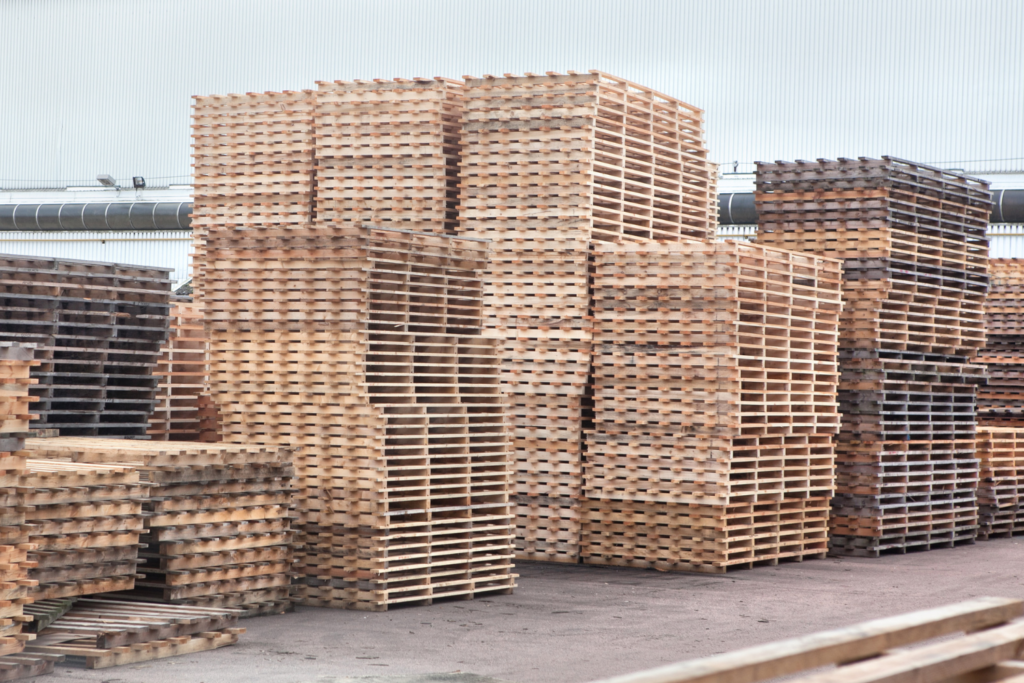
When Should You Heat Treat Pallets?
You should heat treat pallets when the specific circumstances or requirements of shipping make it a more suitable and beneficial option.
1. If the Destination Country Requires It
Different countries have varying phytosanitary requirements, and some may explicitly require heat treatment due to its effectiveness in pest control and its chemical-free nature.
Follow the guidelines to avoid fines, delays, or shipment rejections at the border.
2. You Want to Avoid the Health and Environmental Risks Associated with Chemical Fumigation
Fumigation, particularly with substances like methyl bromide, involves the use of potent chemicals that can pose risks to both human health and the environment if not properly managed.
Heat treatment, on the other hand, eliminates pests without the need for chemicals, making it a safer and more environmentally responsible option.
This is especially important if you prioritize reducing potential health risks for workers and consumers, as well as minimizing the environmental impact of your logistics operations.
3. You Are Handling Products That Could Be Adversely Affected by Chemical Residues From Fumigation
Sensitive goods like food items, pharmaceuticals, and agricultural products are often at risk of contamination from chemical residues left behind by fumigants.
Heat treatment is the safer choice in such cases, as it relies solely on high temperatures to neutralize pests without leaving behind harmful substances.
4. You Are Committed to Environmentally Friendly Practices
Heat treatment aligns with global trends toward sustainability and can help enhance your brand image as a company dedicated to responsible practices.
It uses renewable energy sources and avoids releasing toxic chemicals into the atmosphere.

Conclusion
The choice between fumigation and heat treatment often comes down to specific requirements or priorities.
Fumigation might be the preferred method if a destination country mandates it or if pallets are sourced from areas with a high risk of infestation.
It is also faster in some cases, making it a viable option for tight shipping schedules.
On the other hand, heat treatment is the better choice for those looking to avoid chemicals, ensure the safety of sensitive goods, and embrace environmentally friendly practices.
If you need ISPM15-compliant wooden pallets, contact us or check out our pallet products.
Chesapeake Pallets has been helping companies across the United States level up their logistics, one pallet at a time.
For inquiries, email info@chesapeakepallets.com or request a quote below!

